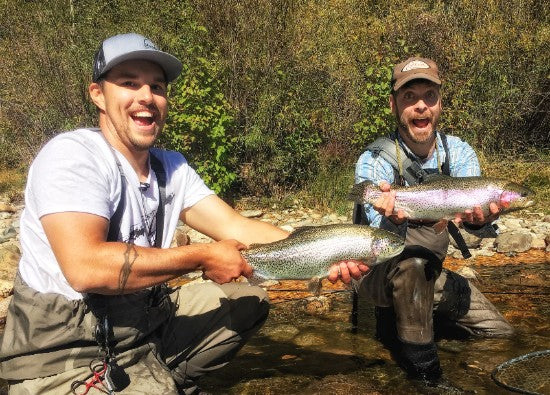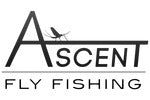
How to Tie and Use a Fly Fishing Drop Shot Rig

If you want to be a more successful angler on the fly, the fly rod and line need to become an extension of your arm. This may sound overly dramatic or implausible, but I assure you that it is possible with some changes to how you set up rig your line and flies, and the adoption of the Drop-Shot Rig. A Drop-Shot Rig removes many of the elements that can spook an alert fish and turns the fishing line into a virtual extension of your nervous system, allowing you to instantly feel every twitch, tap, and take as your flies bump down the river.
One of the main reasons that anglers miss strikes from fish is that there are hinge-points in their line. In a traditional American-style nymphing rig, the fly fisher adds a strike indicator to their leader, they pinch some weight to the leader or tippet in order to help their flies sink, and then the fly or series of flies is tied to end of their rig to be drifted and dragged behind their weight. Several angles or hinge-points in the line are created by rigging in this manner: one where the fly line or leader runs across the surface of the water before diving down at the vertex of the strike indicator, and a second as the line hinges at the weight and the tippet and flies drift above the bed of the river. In order to detect a strike using this type of rig the fish needs to pick up the fly, apply enough pressure to straighten out these hinge points, and hold onto the fly long enough for the angler to detect the strike with their indicator. Needless to say, the added pressure of lifting a weight from the bed of the river and pulling against the buoyant resistance of the indicator is a huge red flag to a trout, and they will often spit the fly and hook before we ever detect the strike. The Drop-Shot Rig is the perfect setup for eliminating one or both of these hinge points and to help you feel even the lightest of takes.
The chief difference of the Drop-Shot Rig is that it is built using a number of different sections & sizes of tippet, flies are added to short tags of tippet tied perpendicular to the leader using tippet rings, and the weight is added to the end of the leader off of a section of ultra-light tippet.
How to Build A Drop-Shot Rig:
- Start with a 9-foot, 2x or 3x tapered leader (monofilament will work but fluorocarbon will sink faster) and remove 2-feet from the thinly tapered end (the opposite end where the leader attaches to the fly line)
- Tie on a tippet ring using an Improved Clinch Knot (the tippet rings are heavily polished so 7-8 twists should be used in your Improved Clinch Knot to ensure that it doesn’t slip)
- Using a 14” – 24” section of 4x - 5x fluorocarbon tippet (length depends on the depth of water being fished), tie into the first tippet ring and add a second tippet ring to the opposite end repeating step 2.
- If you would like to fish 3 flies, repeat step 3 and tie the second section of 4x – 5x fluorocarbon tippet into your second tippet ring.
- Create a Sacrificial Tippet Section using a 12” – 18” section of 6x fluorocarbon tippet, tying one end to your bottom tippet ring (repeating step 2) and adding an Overhand Knot to the end of the opposite side.
- Add several large split shot or pieces of tungsten putty above the Overhand Knot on the bottom of the Sacrificial Tippet Section.
- Add a 5” – 6” piece of 4x – 5x fluorocarbon tippet to each tippet ring and attach your preferred wet fly pattern to the opposite end.
Whether fishing this Drop-Shot Rig under a strike indicator (the preferred method when nymphing DEEP runs like the “Toilet Bowl” section of the Frying Pan River) or by holding your line tight above the weight as it drifts and bounces down the river, the removal of these hinge points will provide maximum sensitivity to even the lightest takes. Few to no hinge-points separate the angler from the flies that freely swim and swing around the leader with life-like realism, and should the weights snag on the bottom of the river, a light pressure can be applied to the line to break the Sacrificial Tippet Section and weights from the rig while preserving your flies!
Next time you are fishing to shy fish on heavily pressured water, or if you are just tired of missing the subtle strikes of selective trout, try out a Drop-Shot Rig and become one with your flies!




